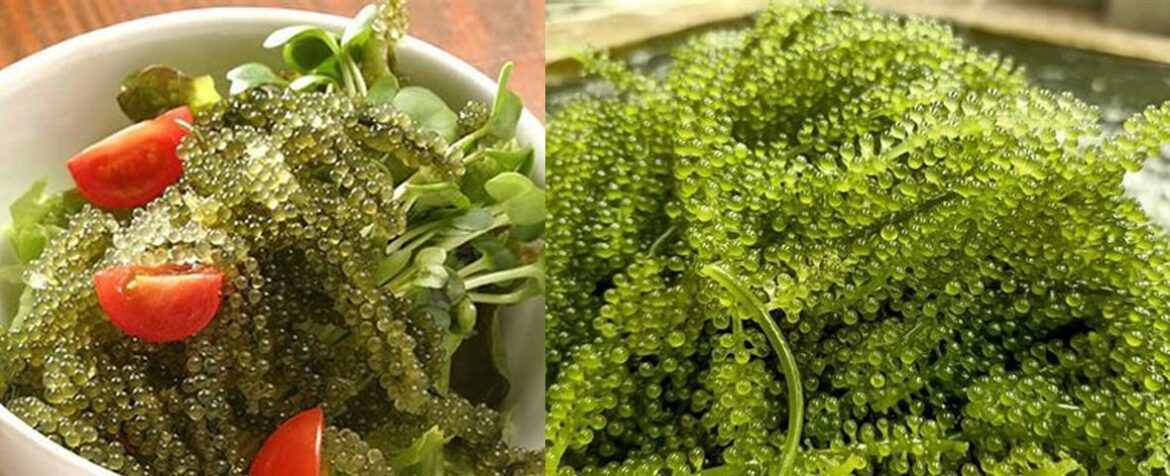Caulerpa Lentillifera Taste – Dive into the delectable depths of the ocean with Caulerpa Lentillifera: A Culinary Exploration of the Sea. If you’ve ever wondered what this intriguing seaweed delicacy tastes like, you’re in for a treat! Prepare to be tantalized as we unravel the mysteries of Caulerpa Lentillifera taste, bringing you a feast of flavor that will leave your taste buds begging for more. From its unique texture to its vibrant green hue, this underwater wonder is a true culinary gem. So, grab your fork and join us on this flavorful adventure as we uncover the secrets behind Caulerpa Lentillifera’s irresistible taste sensation.
Caulerpa Lentillifera: A Culinary Exploration of the Sea
A Delicacy from the Sea: Unveiling the Taste of Caulerpa Lentillifera
In the heart of the Indo-Pacific’s coastal regions lies a unique and captivating species of green algae, known as Caulerpa lentillifera. Commonly referred to as sea grapes, this marine delicacy has gained renown in Oceania, East Asia, and Southeast Asia, finding its way into various culinary creations. Celebrated for its distinct texture and flavor, sea grapes have become a sought-after ingredient, particularly in Japan, where they are revered as a culinary treasure.
A Journey into Texture and Taste
Encountering sea grapes for the first time, one is struck by their remarkable texture. These emerald orbs, reminiscent of tiny clusters of grapes, possess a unique slimy quality akin to fish roe. This textural intrigue adds a captivating dimension to dishes, providing a delightful contrast to other ingredients.
As one savors a sea grape, a mild salty flavor washes over the palate, evoking the essence of the sea. This delicate brininess is a testament to the algae’s marine origins, offering a subtle reminder of its oceanic home. The overall taste experience is one of subtle complexity, a harmonious blend of saltiness and a hint of sweetness that lingers on the tongue.
A Nutritional Powerhouse: Unveiling the Health Benefits of Sea Grapes
Beyond their culinary appeal, sea grapes are also a nutritional powerhouse, boasting an impressive array of essential minerals and vitamins. They are a rich source of iron, manganese, copper, and potassium, essential elements for maintaining optimal health. Additionally, sea grapes are brimming with vitamins A, B, C, and K, providing a comprehensive nutritional profile that supports overall well-being.
Culinary Versatility: Exploring the Culinary Applications of Sea Grapes
The culinary versatility of sea grapes is a testament to their adaptability. These marine gems can be enjoyed in their raw form, allowing their natural flavors and textures to shine through. They are often served alongside rice, salads, soups, and sashimi, adding a touch of briny freshness to these dishes.
In Japan, sea grapes are particularly prized as a topping for sushi, their delicate texture and subtle flavor complementing the richness of the fish. Additionally, they can be infused in hot water or soups, releasing their delicate flavors into the broth.
For those seeking a unique culinary experience, sea grapes can be paired with beer and soy sauce, creating a harmonious blend of flavors that tantalizes the taste buds. Their unique texture also makes them an ideal garnish, adding a touch of elegance and intrigue to any dish.
Preparation Tips: Ensuring Optimal Sea Grape Enjoyment
Sea grapes are typically packed in brine for transportation to various countries. Before consumption, it is recommended to soak them in water to remove excess brine and diminish the fishy smell. This simple step enhances the flavor and texture of the sea grapes, allowing their natural goodness to shine through.
Conclusion: A Culinary Gem from the Sea
Caulerpa lentillifera, commonly known as sea grapes, is a culinary treasure that has captivated taste buds across Oceania, East Asia, and Southeast Asia. Its unique texture, reminiscent of fish roe, and mild salty flavor, akin to the taste of the sea, make it a versatile ingredient that can be enjoyed in various culinary creations. Whether served raw, infused in soups, or paired with other dishes, sea grapes offer a delightful and nutritious addition to any meal.
FAQ about Caulerpa Lentillifera Taste
Q: What is Caulerpa lentillifera?
A: Caulerpa lentillifera, also known as sea grapes, is a species of green algae found in the coastal regions of the Indo-Pacific. It is a marine delicacy celebrated for its unique texture and flavor.
Q: Where is Caulerpa lentillifera commonly used in culinary creations?
A: Caulerpa lentillifera is commonly used in Oceania, East Asia, and Southeast Asia, particularly in Japan, where it is revered as a culinary treasure.
Q: What is the texture of sea grapes?
A: Sea grapes have a remarkable texture. They are small, emerald orbs that resemble clusters of grapes and have a slimy quality similar to fish roe. This unique texture adds a captivating dimension to dishes.
Q: What does Caulerpa lentillifera taste like?
A: Caulerpa lentillifera has a distinct flavor that is often described as slightly salty and reminiscent of the ocean. It adds a refreshing and umami taste to dishes.
Q: How are sea grapes used in culinary creations?
A: Sea grapes are used in a variety of culinary creations. They can be enjoyed raw in salads, used as a garnish, or incorporated into sushi and other seafood dishes. They provide a delightful contrast to other ingredients.
Q: Where can I find sea grapes?
A: Sea grapes can be found in coastal regions of the Indo-Pacific, particularly in Oceania, East Asia, and Southeast Asia. They are also available in some specialty seafood markets and restaurants that specialize in Asian cuisine.


